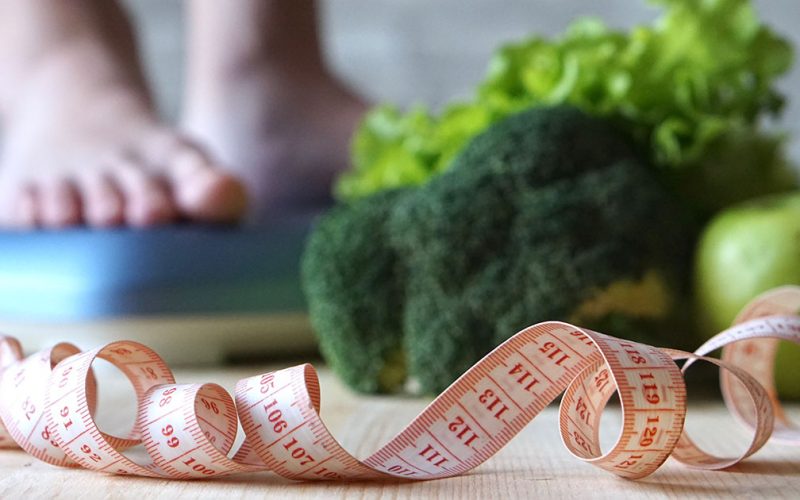Usually, people think that choosing the perfect watermelon is near impossible unless you’re a skilled farmer.
Watermelon is a revitalizing, light, and tasty way to stay hydrated in the heat, if, you know how to choose them correctly.
The trouble with watermelon is trying to find a good one. It can be quite frustrating if you don’t have the tools we’re about to give you.
Picking, selecting, and acquiring a juicy, yummy, totally ripe, and pleasant watermelon can sometimes feel like luck.
Yet, it doesn’t have to be if you uncover a few clues when you’re selecting your melon.
Here’s a quick glance at the 10 steps we will cover.- Look For The Diamond In The Rough
- Think Orange, Not Egg
- Check Out That Bottom
- Look For The Webbing
- The One Knock Test
- Pick The Heavy One
- Sugar Marks The Spot
- Firmness
- The Story Of The Stem
- Seasonally Sensational
There is absolutely nothing even worse than cutting into a watermelon and having it taste boring, not fantastic, and possibly, dehydrated. You need to know precisely how to select the ideal one.
Select incorrectly, and you might end up with a watermelon that is overripe and mealy or completely tasteless and also rock hard.
You will be your family and fellow customers’ envy with this vital life skill that frustrates most people.
We will reveal to you just how you can inform whether a watermelon is ripe without needing to cut into it.
We have gathered these pointers from interviews with produce professionals, farmers, cooks, and watermelon aficionados.
We will teach you how to Choose the freshest Watermelons that are ripe and wonderful from grocery stores, farmers’ markets, farm stands, and even roadside stands.
Without further ado, let’s get into the top 10 tips on exactly how to select a watermelon.
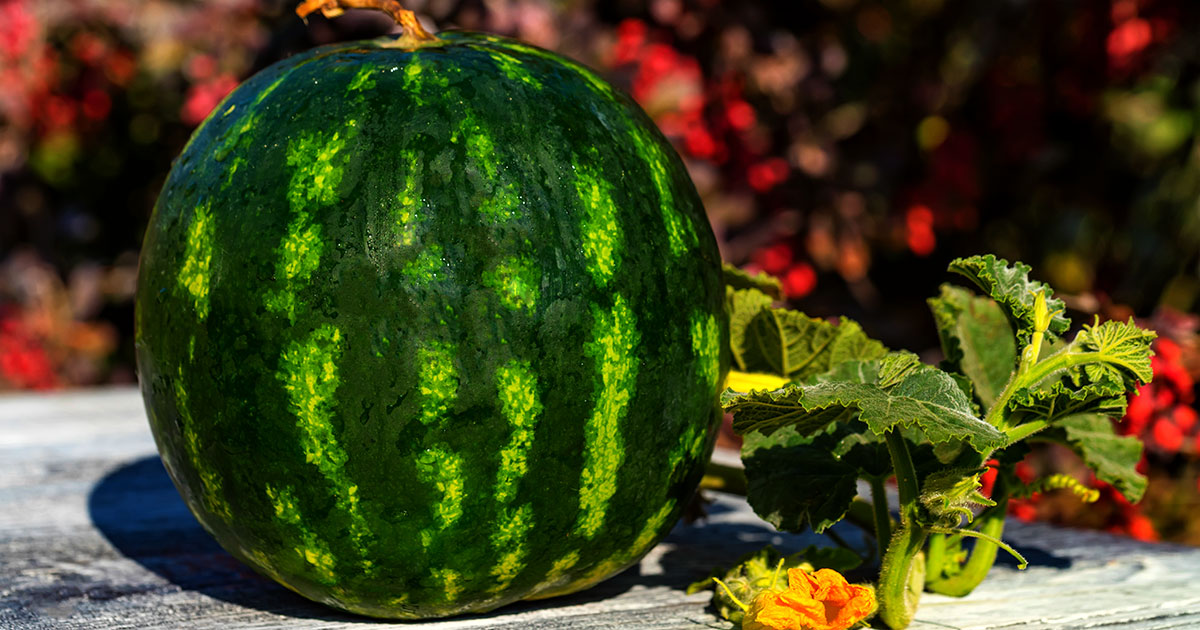
1. Look For The Diamond In The Rough
Your ideal, perfectly ripe watermelon needs to be dark green in color and dull looking. If it’s shiny, it’s not ripe yet.
A shiny appearance shows an underripe melon. Likewise, there is much more to come to examine than only rough spots. The dark green color of the skin is essential.
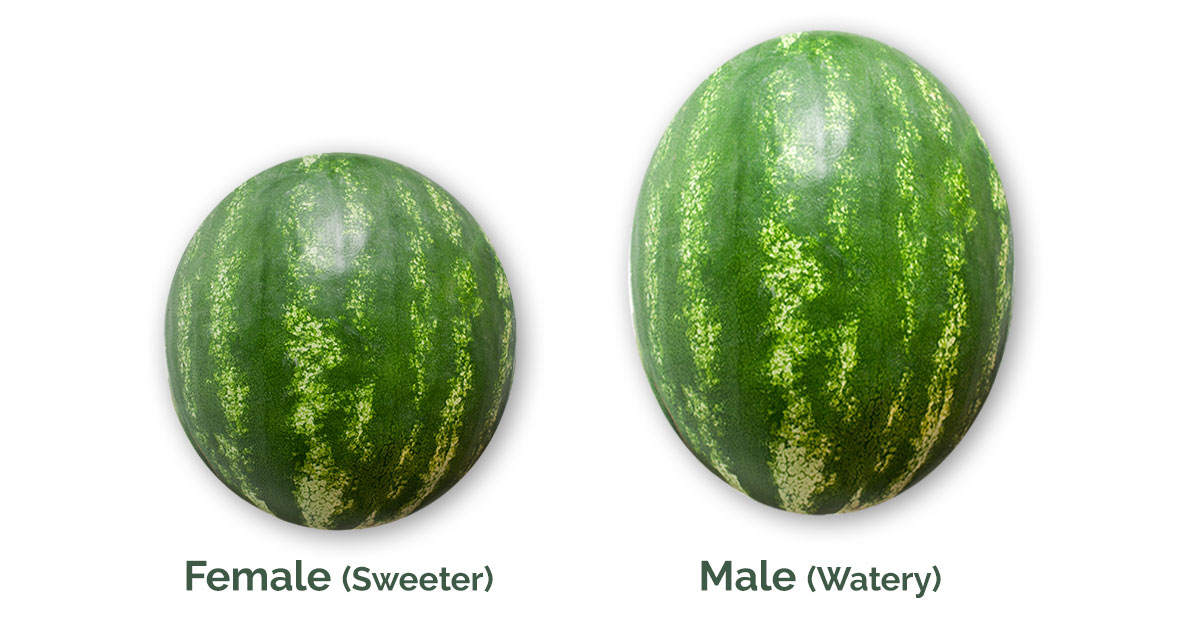
2. Think Orange Shape, Not Egg
Watermelon Genders?
Lots of people are unaware that farmers separate watermelons by sex. For example, ‘males’ are larger, have an elongated form actually, and taste much more watery, not right.
The ‘females’ are rounder and are usually quite excellent.
Seek a watermelon that is rounder and also even more uniformly formed, rather than an oval one.
The rounder melons are sweeter, while the much more oval ones tend to be watery and much less delicious.
Also, ensure to inspect the surface for any irregular lumps and steer clear of those too.
Abnormalities may show that the watermelon received differing amounts of water or was not appropriately pollinated.
But, cuts or dents might indicate the presence of insects or fungus.
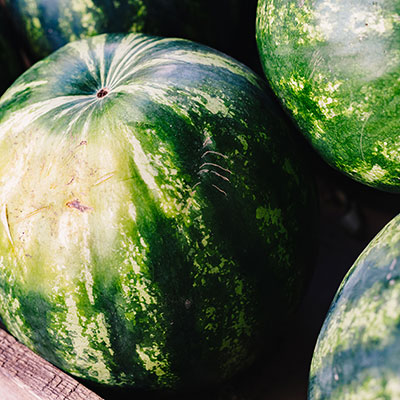
3. Check Out That Bottom
If you turn a watermelon over and examine it, you should see a yellow area, which is commonly known as the ground spot, or field spot.
The ground spot on the underside of a watermelon is where the watermelon was sitting on the ground.
As a rule of thumb, it should be a luscious yellow shade. For the sweetest version, you want a richer, creamy yellow.
Ditch the watermelon if the field spot is white or non-existent.
A whiter spot suggests that it was selected prematurely and didn’t get to peak perfection and is likely an underripe melon.
As watermelons expand as well as ripen, they create this yellow juiciness clue.
A watermelon that has been given sufficient time to ripen will have a more extensive ground spot.
The larger the spot, the longer the melon was allowed to ripen and the more widespread the yellow spot.
Always seek the telltale sign of a prominent, velvety yellow bottom area place.
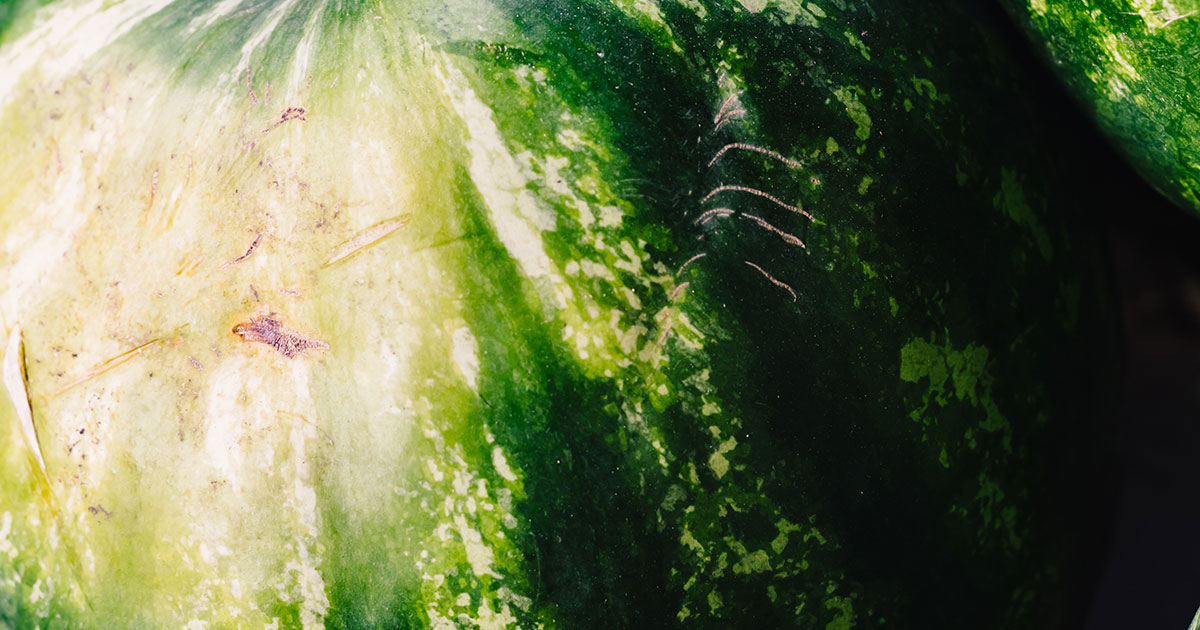
4. Look For That Webbing
These weblike brownish places on the watermelon suggest that they touched the flower’s pollinating parts often. As you can imagine, pollination equals sweetness!
Dry weathering areas as well as vein-like webbing lines are distinctive signs of an additional pleasant watermelon.
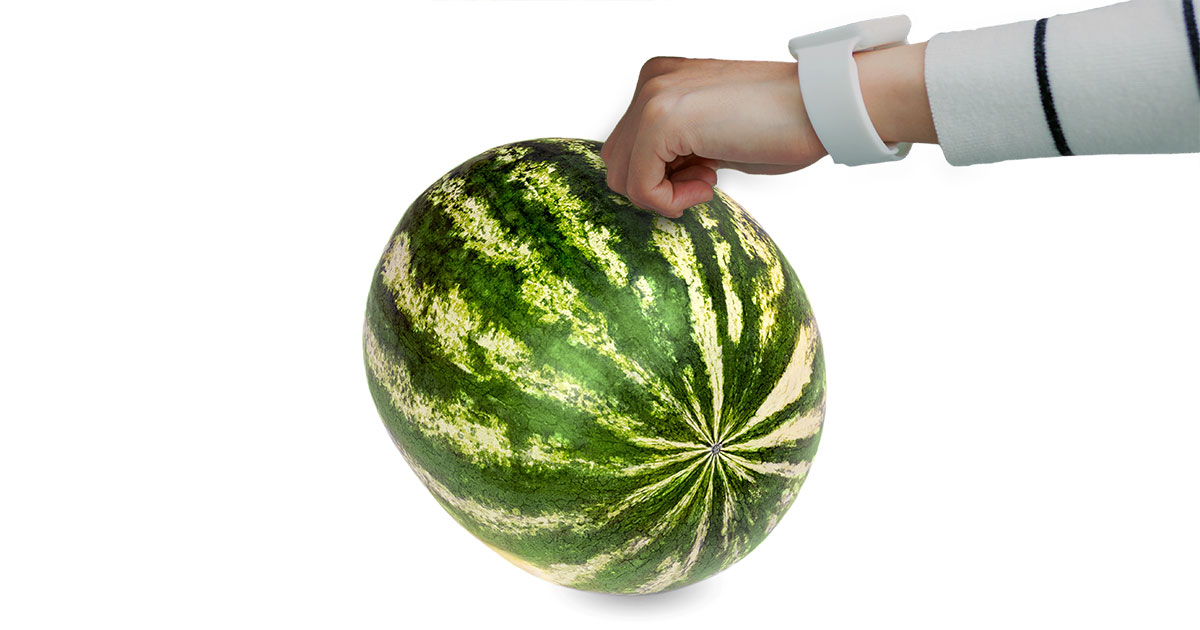
5. The One Knock Test
You might get a funny look, yet knocking on your watermelon might aid you in selecting the very best one.
Its appeal led researchers to develop a resonance analysis proven to identify the ripest watermelons.
Gently knock on the watermelon, as you would a door, and listen to the noise it makes.
Your knuckles need to jump off the melon, and also the surface area ought to be quite hard/firm. Soft flesh indicates it’s starting to ruin.
A ripe watermelon ought to have a full, deep, as well as hollow sound. That shows that the fruit has more water and is likely a riper fruit.
Whereas if your knock sounds denser or dull, it may be a sign that your peel is thick and your fruit has not fully ripened to its ideal state.
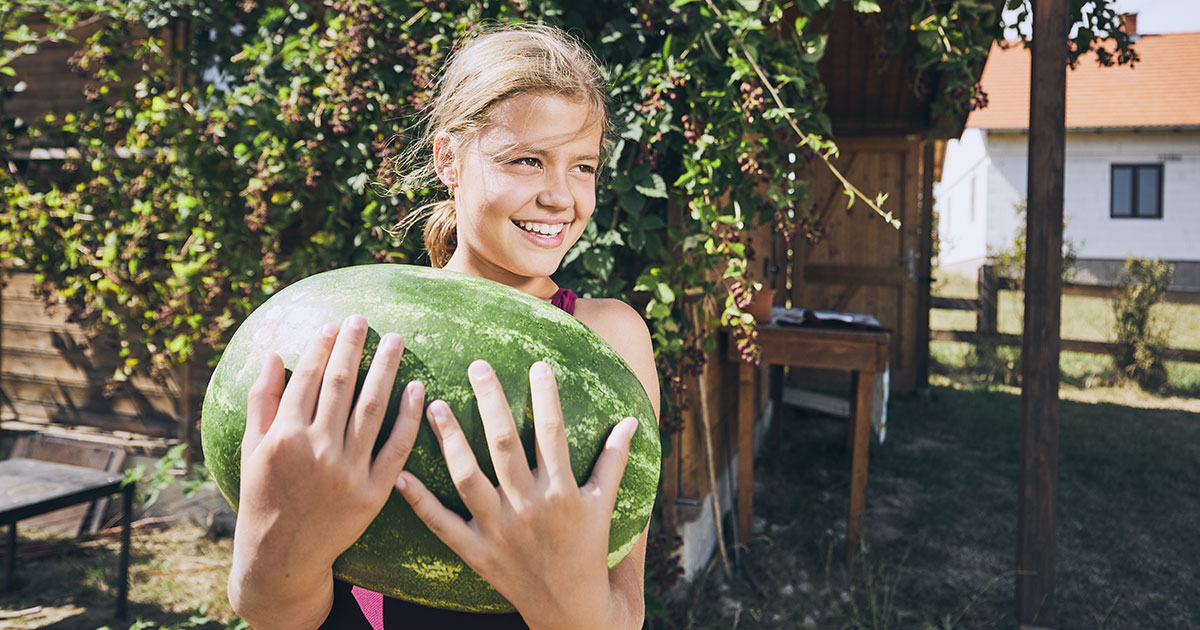
6. Pick the Heaviest Watermelon
The most important part of this tip is to find that perfect watermelon that’s very heavy “for its size.”
If you pick up a few different ones, you’ll get a “feel” for what is “heavy for its size,” and now you will know what that indicates.
When picked up, they need to feel much more massive than they look. That means there’s even more water in it, and consequently juicier!
The heavier it is for its size, the greater the water and fiber, resulting in a sweet watermelon.
Water and fiber content seem to identify a healthy and balanced weight in all fruits, including our beautiful watermelon.
Typically a lighter weighted watermelon is an underripe melon and will have significantly less taste than a heave sweet melon.
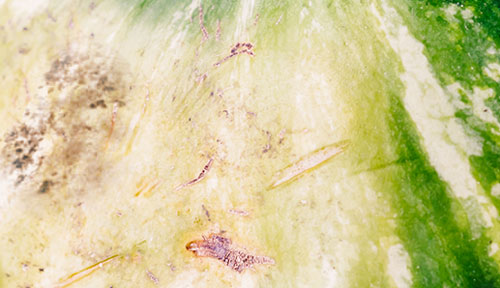
7. Sugar Marks The Spot
If you see black places on the melon, natural sugar permeates out and shows sure signs of sweet watermelon.
If you see dots in a line (not a scratch), these are pollination factors, and the more of them, the considerably better.
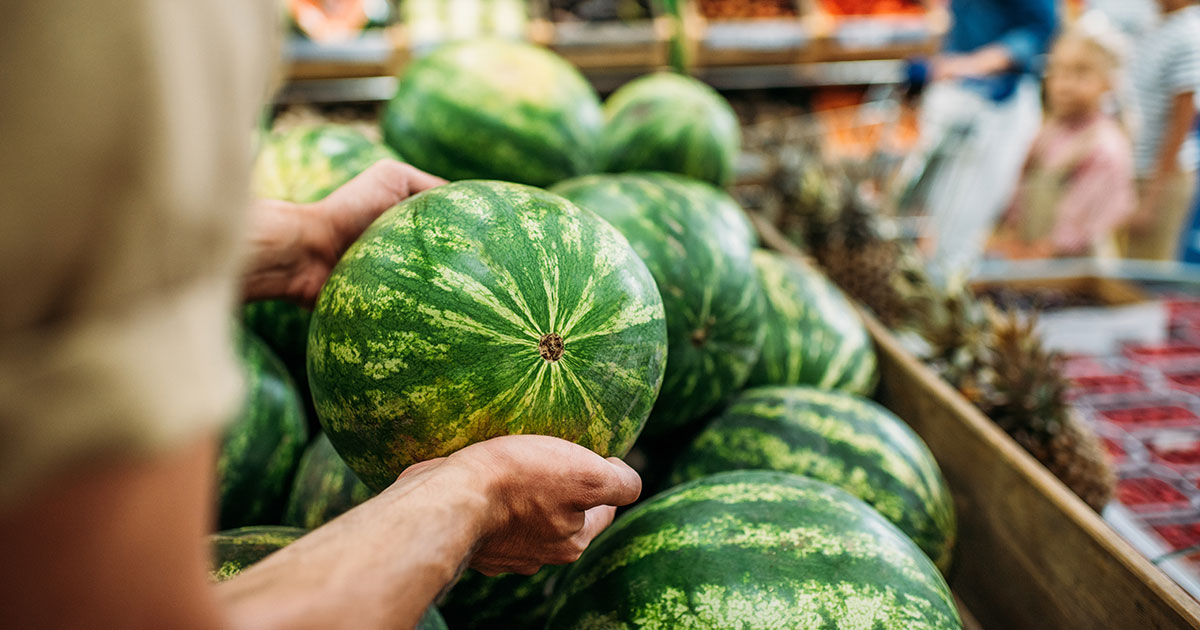
8. Firmness?
A firm watermelon will feel very taught. The skin should be hard and resistant to pressure.
A ripe watermelon must have a thick rind that does not give when pressured. If you feel soft spots it’s time to move on.
Scratching the skin’s surface with your thumbnail shouldn’t puncture it.
If pushing in on the outside of your watermelon feels soft, that’s a hard no.
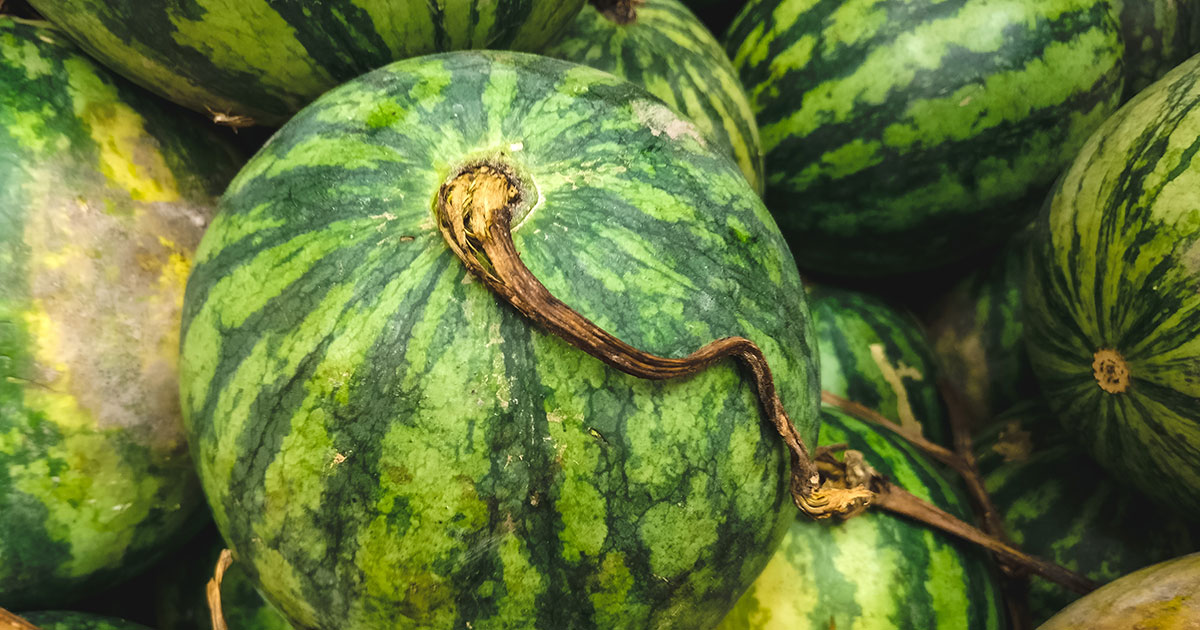
9. The Story Of The Stem
For a sweeter and riper watermelon, there should preferably not be a stem attached.
Instead, there should be a little cavity, suggesting that the stem fell off the mature plant independently.
If all the watermelons available have stems, they may have been harvested prematurely. But not to worry, we can still evaluate our options.
The stem moves water and also nutrients that enable the fruit to expand. The branch links the plant’s fallen leaves, blossoms, and fruit to its roots.
Selecting a watermelon with a stem that was given enough time to ripen will require evaluating the branch that remains.
The stem or tail needs to be completely dry and will usually have a yellow-brown color to it. A dried-out tail shows that the watermelon is ripe.
A watermelon’s tail refers to the stem that remains affixed after the fruit is harvested.
A green stem indicates that the watermelon was picked prematurely and is not yet ripe, and will not taste sweet.

10. Seasonally Sensational
If you a Pro at selecting watermelons, you can always choose the very best melon readily available.
As much as we all want to eat watermelon throughout the year, the very best time to acquire this fruit is throughout its peak period.
Watermelon season is typically between May and September.
Final Thoughts
Now get ready to select the best of the best, and consistently find the most delicious watermelon.
You can appreciate this low-calorie, hydrating, and healthy treat all year long with your new knowledge.
Do you have some additional tips or special methods you use to find your watermelon?
Let me know in the comments!


